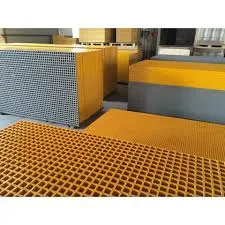
-
 Afrikaans
Afrikaans -
 Albanian
Albanian -
 Amharic
Amharic -
 Arabic
Arabic -
 Armenian
Armenian -
 Azerbaijani
Azerbaijani -
 Basque
Basque -
 Belarusian
Belarusian -
 Bengali
Bengali -
 Bosnian
Bosnian -
 Bulgarian
Bulgarian -
 Catalan
Catalan -
 Cebuano
Cebuano -
 China
China -
 China (Taiwan)
China (Taiwan) -
 Corsican
Corsican -
 Croatian
Croatian -
 Czech
Czech -
 Danish
Danish -
 Dutch
Dutch -
 English
English -
 Esperanto
Esperanto -
 Estonian
Estonian -
 Finnish
Finnish -
 French
French -
 Frisian
Frisian -
 Galician
Galician -
 Georgian
Georgian -
 German
German -
 Greek
Greek -
 Gujarati
Gujarati -
 Haitian Creole
Haitian Creole -
 hausa
hausa -
 hawaiian
hawaiian -
 Hebrew
Hebrew -
 Hindi
Hindi -
 Miao
Miao -
 Hungarian
Hungarian -
 Icelandic
Icelandic -
 igbo
igbo -
 Indonesian
Indonesian -
 irish
irish -
 Italian
Italian -
 Japanese
Japanese -
 Javanese
Javanese -
 Kannada
Kannada -
 kazakh
kazakh -
 Khmer
Khmer -
 Rwandese
Rwandese -
 Korean
Korean -
 Kurdish
Kurdish -
 Kyrgyz
Kyrgyz -
 Lao
Lao -
 Latin
Latin -
 Latvian
Latvian -
 Lithuanian
Lithuanian -
 Luxembourgish
Luxembourgish -
 Macedonian
Macedonian -
 Malgashi
Malgashi -
 Malay
Malay -
 Malayalam
Malayalam -
 Maltese
Maltese -
 Maori
Maori -
 Marathi
Marathi -
 Mongolian
Mongolian -
 Myanmar
Myanmar -
 Nepali
Nepali -
 Norwegian
Norwegian -
 Norwegian
Norwegian -
 Occitan
Occitan -
 Pashto
Pashto -
 Persian
Persian -
 Polish
Polish -
 Portuguese
Portuguese -
 Punjabi
Punjabi -
 Romanian
Romanian -
 Russian
Russian -
 Samoan
Samoan -
 Scottish Gaelic
Scottish Gaelic -
 Serbian
Serbian -
 Sesotho
Sesotho -
 Shona
Shona -
 Sindhi
Sindhi -
 Sinhala
Sinhala -
 Slovak
Slovak -
 Slovenian
Slovenian -
 Somali
Somali -
 Spanish
Spanish -
 Sundanese
Sundanese -
 Swahili
Swahili -
 Swedish
Swedish -
 Tagalog
Tagalog -
 Tajik
Tajik -
 Tamil
Tamil -
 Tatar
Tatar -
 Telugu
Telugu -
 Thai
Thai -
 Turkish
Turkish -
 Turkmen
Turkmen -
 Ukrainian
Ukrainian -
 Urdu
Urdu -
 Uighur
Uighur -
 Uzbek
Uzbek -
 Vietnamese
Vietnamese -
 Welsh
Welsh -
 Bantu
Bantu -
 Yiddish
Yiddish -
 Yoruba
Yoruba -
 Zulu
Zulu
pultruded fiberglass grating
Understanding Pultruded Fiberglass Grating A Comprehensive Overview
Pultruded fiberglass grating has emerged as a premier solution for diverse industrial and commercial applications, owing to its unique characteristics and advantages. As industries continue to seek materials that not only meet performance expectations but also offer sustainability and cost-effectiveness, pultruded fiberglass grating has become increasingly favored in various sectors ranging from construction to wastewater management.
What is Pultruded Fiberglass Grating?
Pultruded fiberglass grating is a type of composite material made using the pultrusion process, which involves the continuous pulling of glass fibers through a resin bath and a heated die. This process results in a highly durable, lightweight product characterized by its high strength-to-weight ratio. The grating is commonly formed into panels that can be used for walkways, platforms, and other applications where traditional materials like steel or wood might falter due to corrosion or structural integrity issues.
Key Properties of Pultruded Fiberglass Grating
One of the most significant advantages of pultruded fiberglass grating is its resistance to corrosion. Unlike metal grating, which can corrode over time, fiberglass grating is inert to a range of chemicals, making it an ideal choice for environments such as chemical processing plants, sewage treatment facilities, and marine applications. This resistance not only enhances the longevity of the grating but also minimizes maintenance costs, which can be substantial over time.
In addition to corrosion resistance, pultruded fiberglass grating is also non-conductive, making it suitable for electrical applications and environments where electrical safety is a concern. Its lightweight nature translates to easier handling and installation, which can significantly reduce labor costs and installation time. Furthermore, the high strength of fiberglass grating means that it can support heavy loads without compromising safety, making it reliable in demanding environments.
pultruded fiberglass grating

Applications of Pultruded Fiberglass Grating
Haymaking the versatility of pultruded fiberglass grating, its applications are vast and varied. It is commonly used in industrial facilities, including refineries and manufacturing plants, where there is a high likelihood of exposure to harsh chemicals. Additionally, it is particularly advantageous in environments subject to high moisture levels or extreme temperatures, such as wastewater treatment plants and pulp and paper mills.
Beyond industrial use, pultruded fiberglass grating is also finding its place in commercial applications. It can be effectively used for pedestrian walkways, recreational platforms, and even swimming pool decks. The aesthetic appeal of many fiberglass grating products, combined with their safety features (like slip-resistance), makes them suitable for architects and builders looking for attractive yet durable solutions.
Environmental Impact
Another compelling aspect of pultruded fiberglass grating is its environmental impact. Traditionally, materials like steel and concrete have significant carbon footprints associated with their production. Conversely, fiberglass grating is produced from raw materials that, while energy-intensive to manufacture, typically provide a greater lifespan and require less maintenance, leading to less waste over time. Moreover, many manufacturers are now emphasizing sustainable practices in their production processes, contributing to a more eco-friendly option in the construction material market.
Conclusion
In conclusion, pultruded fiberglass grating serves as an innovative and practical alternative to traditional grating materials across a multitude of sectors. Its unique combination of durability, resistance to corrosion and chemicals, lightweight nature, and environmental benefits make it a material of choice for engineers, architects, and construction professionals. As industries continue to evolve and prioritize sustainability alongside performance, the adoption and utilization of pultruded fiberglass grating are likely to expand, solidifying its position as a valuable component in modern infrastructure development.









